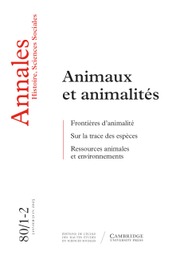Article contents
“ A uno pane e une vino ” : La famille rurale toscane au début du XVe siècle*
Published online by Cambridge University Press: 25 May 2018
Extract
« A uno pane e uno vino » : cette expression traduit-elle une expérience exceptionnelle dans la Toscane du début du Quattrocento ? On en doute à l'entendre si souvent dans la bouche des contribuables ou des scribes du Catasto de 1427, pour décrire des familles, « élargies » ici à une vieille mère, un oncle, un frère ou un parent isolé, et là à des couples, à des familles entières, rassemblées sous le même toit en vastes agrégats.
La réponse n'est pas sans importance, puisque certains voient dans la fin du Moyen Age le moment où l'on est peut-être passé en Europe occidentale d'un modèle « médiéval » des structures matrimoniales et familiales, à un modèle « européen » — mariages différés, célibat définitif important, familles conjugales restreintes …
Nous nous proposons d'examiner dans ces pages si la Toscane, province méridionale de cette Europe en mutation, suit le modèle proposé pour des régions situées plus au nord.
- Type
- Systèmes Familiaux
- Information
- Copyright
- Copyright © Les Éditions de l’EHESS 1972
Footnotes
Le travail qui suit s'inscrit dans l'ensemble des recherches consacrées au Catasto florentin, en collaboration étroite avec David Herlihy, professeur à l'Université du Wisconsin. Cette enquête nous a associés depuis 1967 en bénéficiant du support financier de l'University of Wisconsin et de la National Science Foundation, du côté américain, de l'E.P.H.E. VIe Section, et du C.N.R.S. (ancienne R.C.P. 181, présidée par le professeur Ph. Wolff), du côté français. Notre étude de la famille rurale toscane, menée à partir des données du Catasto préparées pour une exploitation sur ordinateur, répond à celle consacrée tout récemment par D. Herlihy aux mêmes problèmes dans les milieux urbains de Toscane au Quattrocento (cf. Herlihy, 1972).
References
Bibliographie Des Ouvrages Cités
- 11
- Cited by


